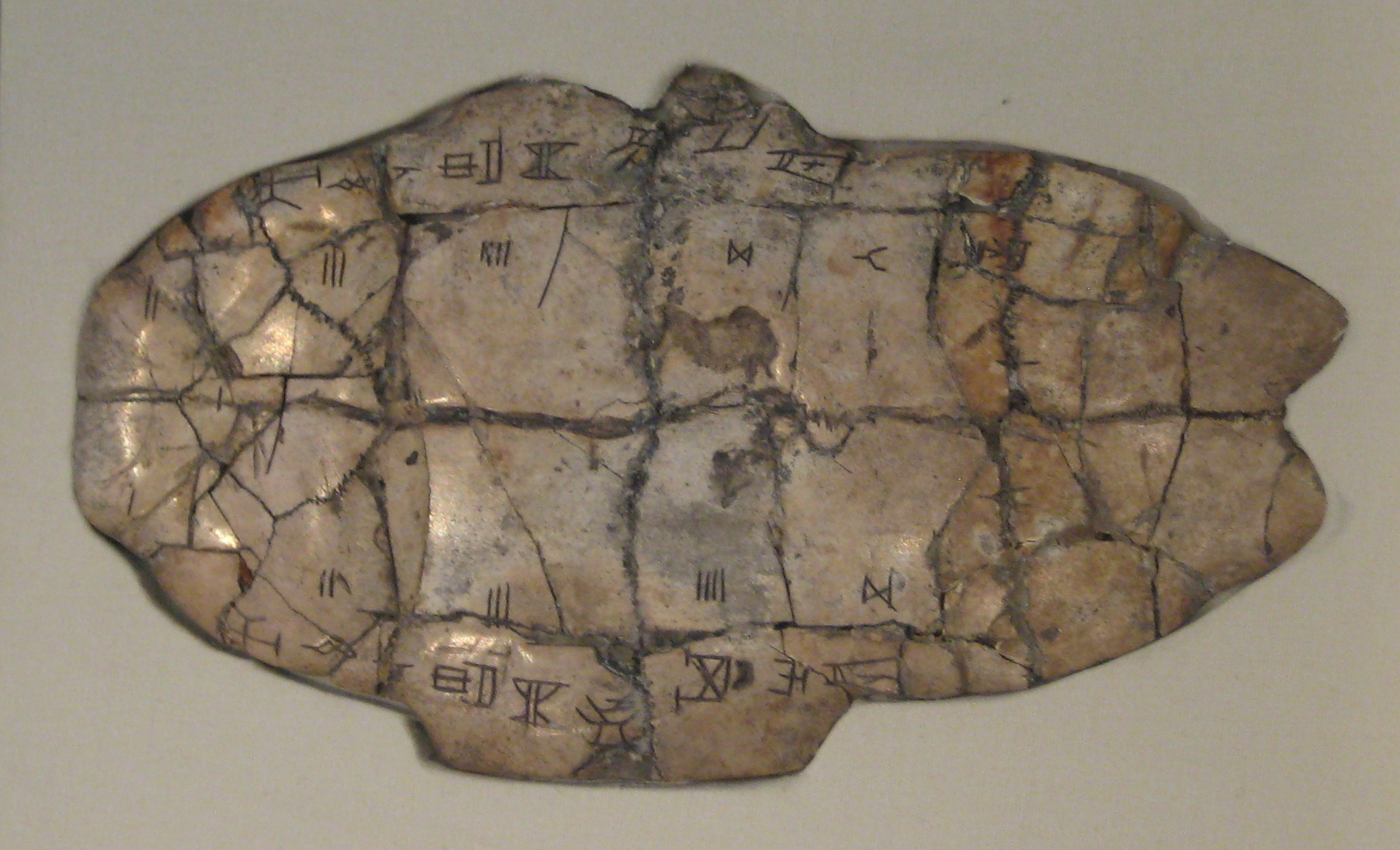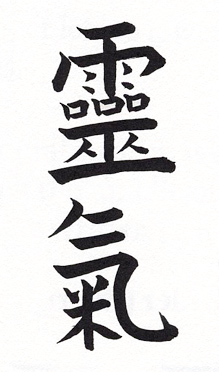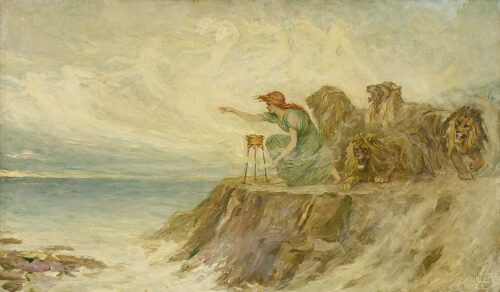“Now and again, it is necessary to seclude yourself among deep mountains and hidden valleys to restore your link to the source of life. Breathe in and let yourself soar to the ends of the universe; breathe out and bring the cosmos back inside. Next, breathe up all fecundity and vibrancy of the earth. Finally, blend the breath of heaven and the breath of earth with your own, becoming the Breath of Life itself.” – Morihei Ueshiba, Aikido Founder
I wanted to learn how to draw the kanji for the word Reiki. So early last year I decided to teach it. I was inspired by the handbook my teacher, Trish Edwards of OM Mountain Yoga in Loveland, CO, had given to us when we took her Shinpiden class (Reiki Level 3). She had hand painted the word Reiki in the modern calligraphy on the cover. So when I first taught the kanji to my Shoden (Reiki Level 1) students, I didn’t so much teach it as I and my students copied my teacher’s work.
After that first experience, I realized that I wanted to teach it properly and thought my problems were solved when I remembered that The Reiki Sourcebook had an excellent description of stroke order in Japanese calligraphy. This was a necessary step in the right direction, but after teaching it this way earlier this year, I realized I still needed further research. I thought I could just Google “Reiki kanji” and a lovely set of prepared instructions complete with numbered strokes would magically appear. It didn’t.
As it turned out, exactly two weeks after my class, Traditional Japanese Reiki teacher Colin Powell of Manchester, U.K., published a beautiful article on the kanji for the word Reiki. He still didn’t provide my coveted illustration with numbered strokes, but he did provide the thing I needed to find the information on my own: he broke down the kanji into their root radicals. Kanji are the Japanese logograms that form the basis of the written language and which were adopted from the Chinese sometime around the fifth century C.E. The radicals are the pictographic syllables that combine to form the kanji.
It’s not like I had never seen this before. The very first Reiki class I took in 2003 in the Usui Tibetan tradition included a document attributed to William Rand that broke down the kanji for the word Reiki into their components, explaining each one. I had always been fascinated from that first day by the fact that one of the radicals was rice—that Reiki was a form of spiritual nourishment, like manna from heaven. But this document didn’t actually break the kanji into the radicals, it simply gave a description of each stroke, sometimes correctly identifying the radical and its Japanese meaning and sometimes providing what appears to be a more poetic interpretation rather than a literal translation.
But Colin Powell actually identified each radical with its Japanese name in romaji (English characters for spelling Japanese words), and that eventually led me to my own public library and a book on writing Japanese characters, complete with the numbered strokes for most of the radicals in the two kanji of the word Reiki. And I created my own handout.
But in addition to finding what I was looking for, I found something much deeper and more profound as I surfed the web. I came across a wonderful article by Frans and Bronwen Stiene (my teacher’s teachers) on the International House of Reiki website. This article provided the etymology of the word Reiki (ling qi in Chinese) tracing it through pre-history to the oracle bone inscriptions from the 16th-11th centuries B.C.E. This article described how the radicals for the kanji Rei —rain, mouths, shaman—formed a prayer for rain. The radicals for Ki, rice, which had captured my imagination so many years ago, and steam or breath, suggest a ritual offering to the gods.
“Rei” means sacred or spiritual and “ki” means energy. But through seeking the source of the word, I found a deeper understanding. Rei is the energy of the universe drizzling down on us. Ki—although certainly the nourishment we receive from that—also suggests the offering we return to the gods. Like precipitation and evaporation, Reiki is a cycle of receiving and returning. When we practice Reiki, we are not only receiving this sacred energy, but our very experience of it returns the energy as an offering. When we become Reiki, we become the ebb and flow of the breath of the Divine, the breath of life itself. A radical idea?
Two years ago, during one of the periods when I had a strong daily yoga routine, I was lying in savasana, corpse pose, to close a particularly good practice. I suddenly had the most amazing experience: I felt the sensation of raindrops falling all over me, warm, vitalizing drops of energy. I had not experienced this sensation in any of my magical work or my Reiki practice. I was certain I had received a blessing from Shiva.
In many of my esoteric classes, in particular my tarot and astrology classes, I approach the work from the perspective of story-telling, pulling from the primary sources of that subject including Aristotle’s Poetics, Joseph Campbell’s The Hero with a Thousand Faces, and Robert McKee’s Story. I also pull from my education in dramatic literature and screenwriting. One of the principles I learned in a screenwriting class is the idea of the Big Want and the Big Need. In the journey that led me to the Reiki radicals, my Big Want was to have an attractive and easy-to-follow handout to teach the stroke order of the kanji in the word Reiki. But my Big Need, the necessary personal transformation I needed to undergo in order to achieve my goal, was the discovery of the ancient roots of the word Reiki. And the corresponding realization that I had known this experience before knowing the words for it.
The answers we seek are always already within us. It’s true that sometimes looking outside of ourselves provides the mirror that brings us back to our own inner understanding. The Divine is outside of us when we breathe in and soar to the ends of the universe; the Divine is within us when we breathe out and find the cosmos deep inside. The rain entering the mouths is the breathing in of the blessing of the sacred energy while our out breath is our offering of oneness with the Divine; the experience that we are greater than what we know ourselves to be. A radical idea.
Joy Vernon specializes in Traditional Japanese Reiki and is a Reiki Teacher in the Usui Reiki Ryôhô lineage. She is also a certified Komyo Reiki Shihan (Teacher) and studied under Komyo Reiki Kai Founder Hyakuten Inamoto. She leads the Denver Traditional Reiki Meetup. Joy is also a Certified Professional Tarot Reader. To schedule an appointment or for information on upcoming classes, please visit JoyVernon.com.
© 2012 by Joy Vernon. All rights reserved.








